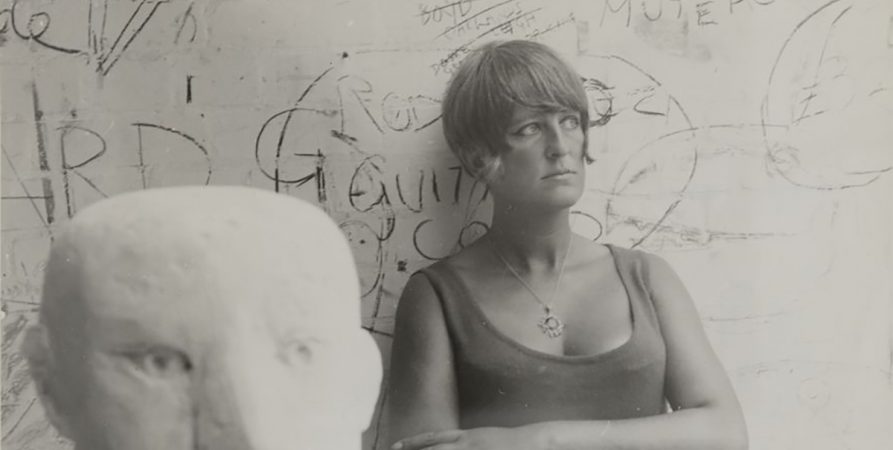Green Man (blue)
Dame Elisabeth Frink
Life Story
The Green Man was the subject of Frink’s last series, poignantly produced after she had been diagnosed with a terminal illness. Known since antiquity in many cultures as a symbol of rebirth and new life, she found solace in this enduring theme. Her interest was sparked when her friend, the artist Mary Fedden, gave her William Anderson’s book Green Man: the Archetype of Our Oneness with the Earth (1990) while she was recovering after an operation. The book, which opens with the line ‘The Green Man signifies irrepressible life’, made a deep impression and Frink invited the author to lunch where every course was a different shade of green. [1]
Soon after, she made a series of screen prints and drawings, where the shoots of new plant growth sprout from the face. Made in bold, striking colours these images represent some of her most impressive graphic work. She also explored the theme in sculpture using coloured patinas. Frink had hoped to develop the Green Man into a full-length sculpture, but this was never realised. The subject finds echoes, however, in her large Risen Christ (1993) which was installed in the Anglican cathedral in Liverpool on the eve of her death.
Calvin Winner, March 2022
[1] William Anderson, Green Man: The Archetype of Our Oneness with the Earth (1990), p.14
The Green Man was the subject of Frink’s last series, poignantly produced after she had been diagnosed with a terminal illness. Known since antiquity in many cultures as a symbol of rebirth and new life, she found solace in this enduring theme. Her interest was sparked when her friend, the artist Mary Fedden, gave her William Anderson’s book Green Man: the Archetype of Our Oneness with the Earth (1990) while she was recovering after an operation. The book, which opens with the line ‘The Green Man signifies irrepressible life’, made a deep impression and Frink invited the author to lunch where every course was a different shade of green.
Soon after, she made a series of screen prints and drawings, where the shoots of new plant growth sprout from the face. Made in bold, striking colours these images represent some of her most impressive graphic work. She also explored the theme in sculpture using coloured patinas. She had hoped to develop the Green Man into a full length sculpture, but this was never realised. The subject finds echoes, however, in her large Risen Christ (1993) which was installed in the Anglican cathedral in Liverpool on the eve of Frink’s death.
Further Reading
Calvin Winner, Tania Moore, Annette Ratuszniak (eds.), Elisabeth Frink - Humans and Other Animals, Sainsbury Centre, 2018
Stephen Gardiner, The Official Biography of Elisabeth Frink, HarperCollins, 1998
Elisabeth Frink: Sculpture, Catalogue Raisonné, Harpvale Books, 1984, Interview with Bryan Robertson
Not on display
Title/Description: Green Man (blue)
Artist/Maker: Dame Elisabeth Frink
Born: 1992 - 1992
Object Type: Drawing
Measurements: H. 575 x w. 530 mm
Accession Number: 50837
Copyright: © Frink Estate
Credit Line: Provided to the Sainsbury Centre in accordance with the wishes of the artist’s late son, Lin Jammet
Elisabeth Frink’s Universal Truths
Why this artist’s works will be right at home in the Sainsbury collection
Continue reading






